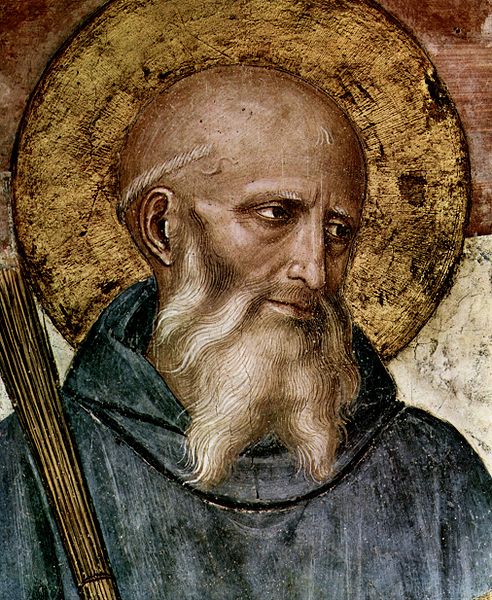Boniface was an English Benedictine monk and leading figure in the Anglo-Saxon mission to the Germanic parts of Francia during the eighth century. He organised significant foundations of the church in Germany and was made bishop of Mainz by Pope Gregory III. He was martyred in Frisia in 754, along with 52 others, and his remains were returned to Fulda, where they rest in a sarcophagus which remains a site of Christian pilgrimage.
Saint Boniface by Cornelis Bloemaert, c. 1630
Prayer card, early 20th century, depicting Boniface leaving England
Saint Boniface felling Donar's Oak
Fulda Sacramentary, Saint Boniface baptising (top) and being martyred (bottom)
The Benedictines, officially the Order of Saint Benedict, are a mainly contemplative monastic religious order of the Catholic Church for men and for women who follow the Rule of Saint Benedict. The male religious are also sometimes called the Black Monks, in reference to the colour of their religious habits, in contrast to other Benedictine orders such as the Olivetans, who wear white. They were founded in 529 by Benedict of Nursia, a 6th-century Italian monk who laid the foundations of Benedictine monasticism through the formulation of his Rule. Benedict's sister, Scholastica, possibly his twin, also became a religious from an early age, but chose to live as a hermit. They retained a close relationship until her death.
Saint Benedict of Nursia (c. 480–543). Detail from a fresco by Fra Angelico (c. 1400–1455) in the Friary of San Marco Florence.
Abbey of Monte Cassino
Melk Abbey
Abbatiale Saint-Benoit, southern aspect as in 1893








